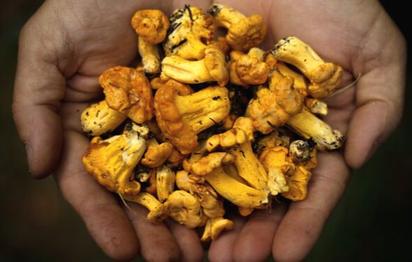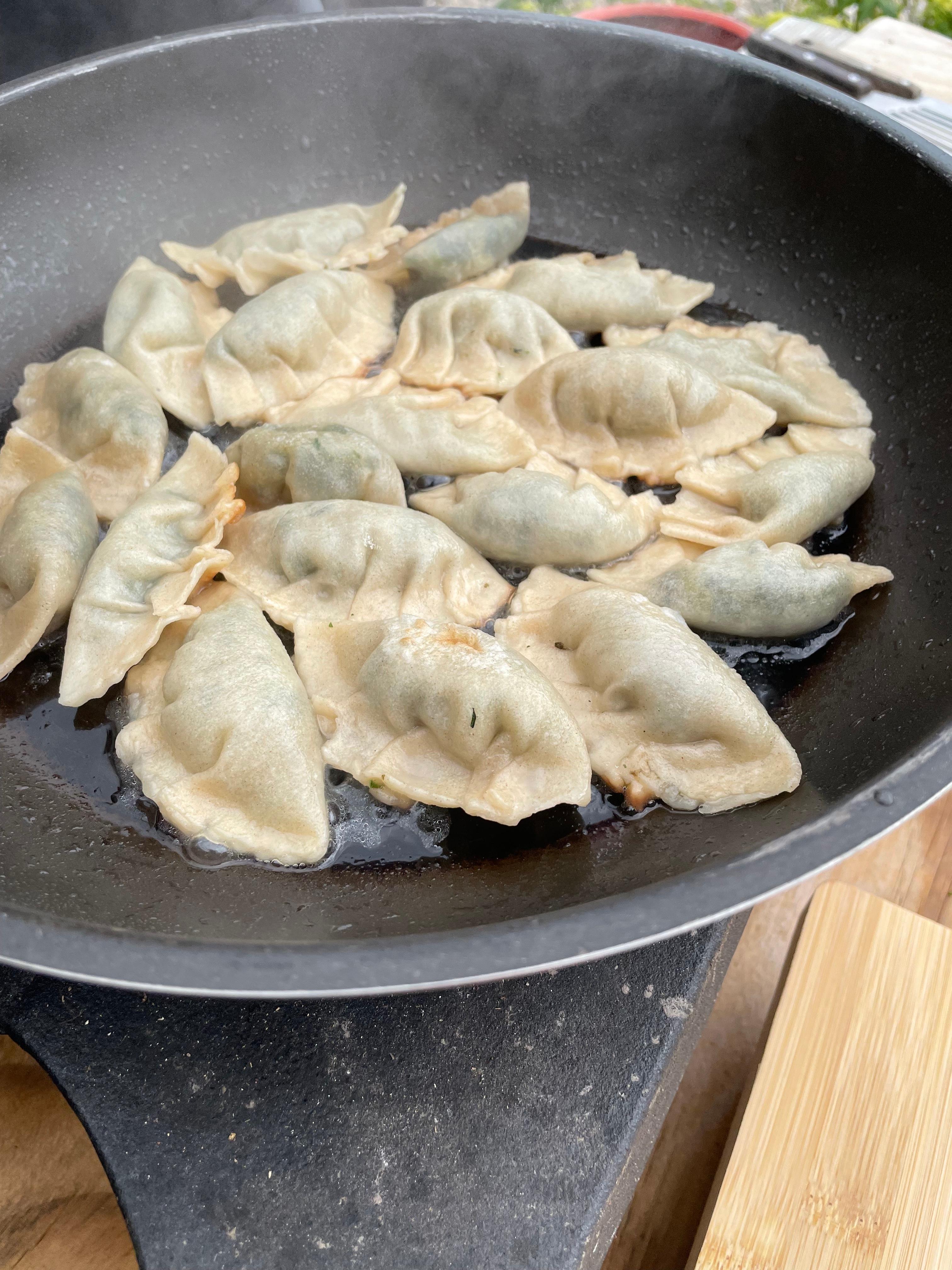
Emma’s top edible UK seaweeds
Emma started foraging seaweed at the tender age of 14 after discovering a copy of Roger Phillips' Wild Food at her cousin’s school fete. Shortly after picking up this iconic foraging book, she ventured to Cornwall on holiday with her dad where they made elderflower cordial for the first time, and armed with her new favourite book and imitation swiss-army penknife she discovered sea rocket.
The book opened up a whole new world of food and nature for Emma and since, she’s found that seaweeds are fairly easy to identify and most can be found near the shore. A helpful guide to identifying different British seaweeds are to categorise them by colour.
Green seaweeds contain high amounts of chlorophyll so tend to live in shallow water and brown seaweeds tend to live in deeper waters – both red and brown seaweeds also contain chlorophyll but also other pigments that help the seaweed photosynthesise with less sunlight filtering through the water.
Below are Emma’s favourite British seaweed varieties along with uses and health benefits:
Green seaweed
Sea lettuce (ulva lactuca) – rich in vitamins, plus calcium and magnesium which can help prevent osteoporosis
Gutweed (ulva intestinalis) – rich in vitamin C and B12 and great dried, crushed and treated likenori flakes
Red seaweed
Dulse (palmaria palmata) – delicious dried and eaten as a crisp
Carragheen or Irish moss (chondrus crispus carragheen) – natural gelling agent commonly used in ice cream
False Irish moss (mastocarpus stellatus) – also used as a gelling agent
Pepper dulse (osmundea pinnatifida) – strong buttery flavour, called the truffle of the sea
Laver (porphyra umbilicalis) – this is related to nori and is delicious dried and eaten, or boiled down for hours to make laver bread
Brown seaweed
Oarweed (laminaria digitata) – chopped and dried or fried to make crisps
Kelp (laminaria digitata) – referred to as ‘kombu’ in Japan and used in dashi stock for miso and other soups
Sugar kelp (laminaria saccharina) – naturally sweet due to mannitol
Serrated wrack (fucus serratus) – used in cosmetics and other toiletries
Bladderwrack (fucus vesiculosus) – high in iodine, useful for stimulating the thyroid and helping with weight loss
Knotted wrack(ascophyllum nodosum) – being studied for anti-cancer
Channelled wrack (pelvetia canaliculate) – High in vitamin C and selenium, use in stir fries
Japanese wireweed (sargassum muticum) – delicious seaweed raw with tasty ‘caviar’ fruiting bodies
Sea spaghetti, or thongweed (himanthalia elongata) – dried and eaten like biltong or cooked like spaghetti
Dabberlocks (alaria esculenta) – like Japanese wakame, used to flavour soups, stir fries, etc.
NOTE: There is only one seaweed you need to be cautious of which is high in sulphuric acid called Desmarestia but this grows in deep water so it is unlikely you’ll come across it. All other seaweeds are ‘safe’ but some can be unpleasant in texture and others with too strong a flavour.
Join Emma Gunn on her next Seashore Foraging adventure at River Cottage where you can visit sites seen in the series River Cottage Reunited , follow Emma on Instagram or visit her website where you can buy Emma’s seaweed foraging books and posters.
For further morsels of seaweed and coastal foraging, check out the River Cottage Edible Seashore Handbook by John Wright or his online Foraging and Feasting course
For further morsels of seaweed and coastal foraging:

Foraging expert John Wright, author of three River Cottage Handbooks about foraging, will take you on three, real, forays: along the hedgerow, beside the seashore, and to the fields and woods hunting for mushrooms.
These are, indeed, real forays, with all the hopes, disappointments, limitations of season and joys that we must expect when venturing into the wild for our dinner. They all take place in an autumnal Dorset, but the lessons learned here can be applied to other places and other times.

Emma Gunn’s gyozas are the perfect for housing freshly foraged seaweed and other coastal foraged finds. They’re hugely impressive, wildly delicious and surprisingly simple to make – and if you’ve got a portable hob and ready-made wrappers, you can make them on the beach.
View recipe